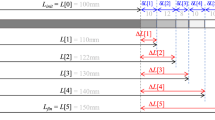Abstract
Chorioamnion, the membrane surrounding a fetus during gestation, is a structural soft tissue critical for maintaining a successful pregnancy and delivery. However, the mechanical behavior of this tissue membrane is poorly understood. The structural component of chorioamnion is the amnion sublayer, which provides the membrane’s mechanical integrity via a dense collagen network and is the focus of this investigation. Amnion uniaxial and planar equi-biaxial tension testing was performed using cyclic loading and stress-relaxation. Cyclic testing demonstrated dramatic energy dissipation in the first cycle followed by less hysteresis on subsequent cycles. Fractional energy dissipation per cycle was strain dependent, with greatest dissipation at small strain levels. Stress-relaxation testing demonstrated a level-dependent response and continued relaxation after long relaxation times. A nonlinear viscoelastic (separable) hereditary integral approach was inadequate to model the amnion response due to intrinsic coupling of the strain- and time-dependent responses.
Similar content being viewed by others

References
W. Schmidt The amniotic fluid compartment: The fetal habitat. Advances in Anatomy, Embryology, and Cell Biology 127, (Springer-Verlag, Berlin, Germany, 1992).
B. Mercer: Preterm premature rupture of the membranes. Obstet. Gynecol. 101, 178 (2003).
Bryant-G.D. Greenwood: The extracellular matrix of the human fetal membranes: Structure and function. Placenta 19, 1 (1998).
H. Oxlund, R. Helmig, J.T. Halaburt and N. Uldbjerg: Biomechanical analysis of human chorioamniotic membranes. Eur. J. Obstet. Gynecol. Reprod. Biol. 34, 247 (1990).
W.J. Polzin and K. Brady: Mechanical factors in the etiology of premature rupture of the membranes. Clin. Obstet. Gynecol. 34, 702 (1991).
M.L. Oyen, S.E. Calvin and R.F. Cook: Uniaxial stress-relaxation and stress-strain responses of human amnion. J. Mater. Sci.-Mater. Med. 15, 619 (2004).
R. Helmig, H. Oxlund, L.K. Petersen and N. Uldbjerg: Different biomechanical properties of human fetal membranes obtained before and after delivery. Eur. J. Obstet. Gynecol. Reprod. Biol. 48, 183 (1993).
J.P. Lavery and C.E. Miller: The effect of labor on the rheologic response of chorioamniotic membranes. Obstet. Gynecol. 50, 467 (1977).
J.P. Lavery, C.E. Miller and R.D. Knight: The effect of labor on the rheologic response of chorioamniotic membranes. Obstet. Gynecol. 60, 87 (1982).
M.L. Oyen, R.F. Cook and S.E. Calvin: Mechanical failure of human fetal membrane tissues. J. Mater. Sci.-Mater. Med. 15, 651 (2004).
E.A. Schober, R.P. Kusy and D.A. Savitz: Resistance of fetal membranes to concentrated force applications and reconciliation of puncture and burst testing. Ann. Biomed. Eng. 22, 540 (1994).
E.K. Pressman, J.L. Cavanaugh and J.R. Woods: Physical properties of the chorioamnion throughout gestation. Am. J. Obstet. Gynecol. 187, 672 (2002).
W.N. Findley, J. Lai and K. Onaran: Creep and Relaxation of Nonlinear Viscoelastic Materials (Dover, New York, 1989).
Y.C. Fung: Biomechanics: Mechanical Properties of Living Tissues, 2nd ed. (Springer-Verlag, New York, 1993).
Oyen-M. Tiesma and R.F. Cook: Technique for estimating the fracture resistance of cultured neocartilage. J. Mater. Sci.-Mater. Med. 12, 327 (2001).
R.C. Haut and R.W. Little: A constitutive equation for collagen fibers. J. Biomech. 5, 423 (1972).
M.K. Toppozada, N.A. Sallam, A.A. Gaafar and K.M. el-Kashlan: Role of repeated stretching in the mechanism of timely rupture of the membranes. Am. J. Obstet. Gynecol. 108, 243 (1970).
M.G. Dunn and F.H. Silver: Viscoelastic behavior of human connective tissues: Relative contribution of viscous and elastic components. Connect. Tissue Res. 12, 59 (1983).
M. Oyen-Tiesma and R.F. Cook: Solution-mediated stress relaxation of an artificial cartilage, in Soc Exper Mech 2001 Annual Meeting Proc, 234–236 (2001).
C.P. Weiner, J. Heilskov, G. Pelzer, S. Grant, K. Wenstrom and R.A. Williamson: Normal values for human umbilical venous and amniotic fluid pressures and their alteration by fetal disease. Am. J. Obstet. Gynecol. 161, 714 (1989).
O.H. Harmanli, R.J. Wapner and J.F. Lontz: Efficacy of fibrin glue for in vitro sealing of human chorioamniotic membranes. J. Reprod. Med. 43, 986 (1998).
Author information
Authors and Affiliations
Corresponding author
Additional information
This paper was selected as the Outstanding Meeting Paper for the 2004 MRS Fall Meeting Symposium Y Proceedings, Vol. 844.
Rights and permissions
About this article
Cite this article
Oyen, M.L., Cook, R.F., Stylianopoulos, T. et al. Uniaxial and biaxial mechanical behavior of human amnion. Journal of Materials Research 20, 2902–2909 (2005). https://doi.org/10.1557/JMR.2005.0382
Received:
Accepted:
Published:
Issue Date:
DOI: https://doi.org/10.1557/JMR.2005.0382



